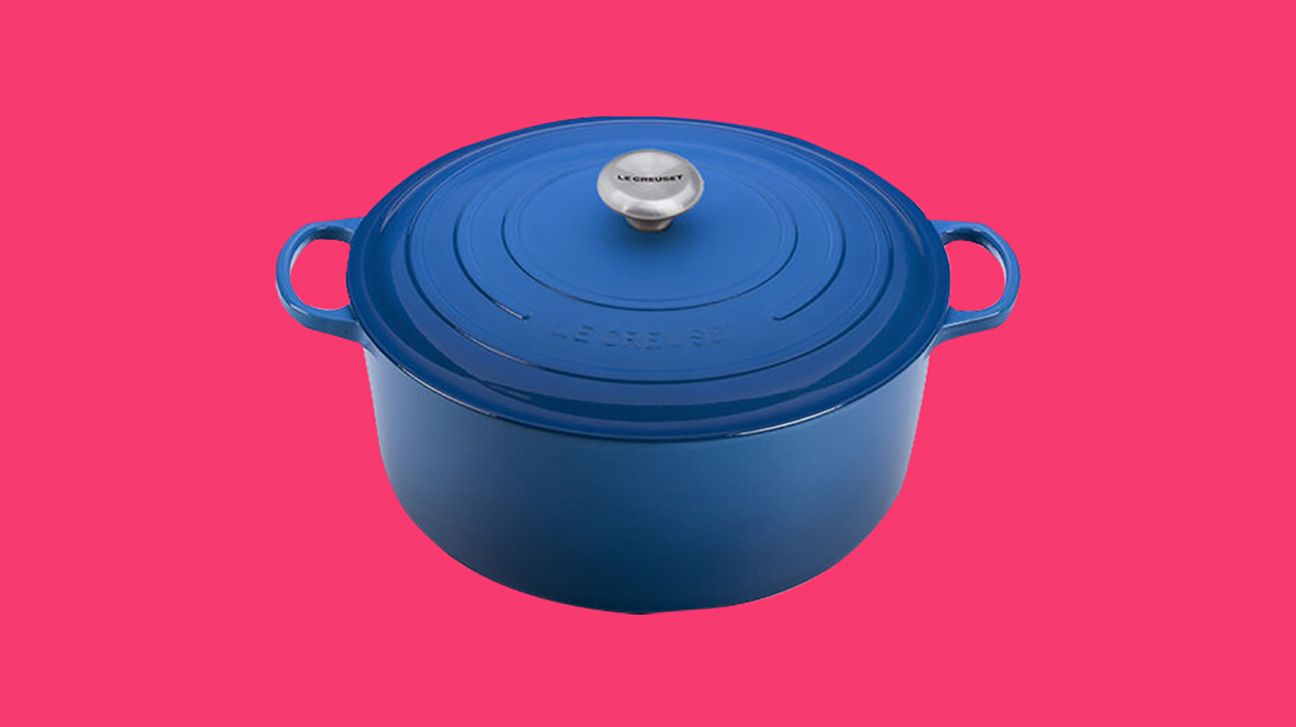We include products we think are useful for our readers. If you buy through links on this page, we may earn a small commission. Here’s our process.
Greatist only shows you brands and products that we stand behind.
Our team thoroughly researches and evaluates the recommendations we make on our site. To establish that the product manufacturers addressed safety and efficacy standards, we:- Evaluate ingredients and composition: Do they have the potential to cause harm?
- Fact-check all health claims: Do they align with the current body of scientific evidence?
- Assess the brand: Does it operate with integrity and adhere to industry best practices?
Enameled cast-iron pots (sometimes called French ovens), made famous by the brand Le Creuset, are excellent at holding temperature and can be easier to maintain than bare cast iron.
How to clean scratches out of a Le Creuset: The 411
Fear not! If you’ve scratched your Le Creuset with metal utensils, it’s probably metal residue that’s scratched away from your spatula.
You can use a gentle cleaning compound to get rid of these.
If you’ve got a legit, deep scratch or chip that’s messing with the pan’s performance, there’s no safe and effective DIY enamel coating you can apply that works as well as the original. Time for a new pot!
They’re also a (pretty pricey) investment — but they last longer than William Shatner’s career, and you may even get a lifetime’s use out of one.
Here are some quick tips on how to care for your beloved Le Creuset and keep it in prime working order.
Zut alors! A scratched Le Creuset! Take a deep breath and don’t be too hard on yourself. It might not be a scratch at all.
What may appear to be scratches in the enamel could be marks left by metal kitchen tools. These are streaks of metallic residue, which have caused little or no damage to the underlying enamel. (Enamel is much harder than stainless steel, so the appearance of metallic residue is far more likely than actual scratches.)
Try scrubbing the marks with a gentle cleaning compound like:
- Bon Ami
- Bar Keepers Friend
- Le Creuset’s own cleaning product
Some folks even swear by denture-cleaning tablets.
What’s causing those utensil scratches, then? There’s a strong chance you’re using metal utensils. Big nope.
To avoid scratching the enamel, it’s best to use utensils that are:
- made of rubber
- made of wood
- coated with silicone
Wooden spoons and birch or silicone-coated whisks get the thumbs-up.
So you’ve got a hefty scratch or chip in your enamel-coated cookware that’s affecting the performance of the pan, and it’s clearly more than metal residue.
In those instances, you don’t really have any options. No food-safe enamel paint or coating is available that truly stacks up to the original.
If your Le Creuset is cosmetically scratched (or those pesky metal marks have appeared), it’ll still work just fine. It’s only when your cookware is chipped beyond repair, causing food to cook unevenly, that you might need to consider a new pot.
Your Le Creuset might be one of your most prized kitchen possessions, and a scratch might seem like it’s going to ruin your whole cooking swag.
But don’t worry! Enamel is hardcore, and most apparent “scratches” are actually just traces of metal that your pan has scraped off your utensils. Use a gentle cleaning product to rid your cookware of this residue.
It’s best to use wooden, silicone-coated, or rubber utensils to avoid these annoying marks.


